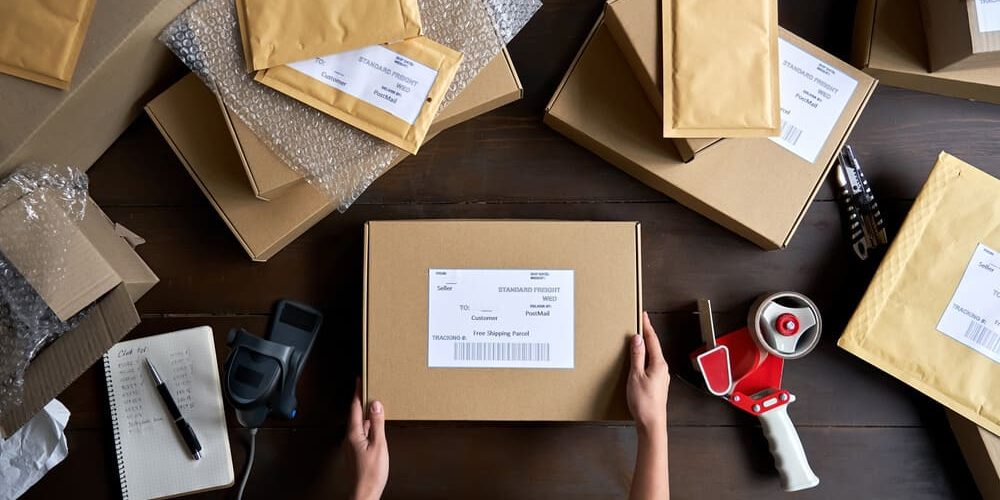
Packaging has long been a critical component of product distribution, initially serving a utilitarian purpose—protecting items https://distinctive-solutions.ca/packaging-solutions/ during transport and storage. However, over the past few decades, its role has evolved dramatically. No longer just a protective shell, packaging has become a powerful tool for branding, marketing, and sustainability efforts. The shift in its function can be attributed to a growing recognition of its impact on consumer behavior, as well as innovations in design, materials, and technology. Today, packaging can influence purchasing decisions, communicate a brand’s values, and even enhance the user experience, making it a crucial part of any business strategy.
At its core, packaging still serves its original purpose of safeguarding the product, but now it’s expected to do much more. Modern packaging is designed to be both functional and aesthetically pleasing, often tailored to create an emotional connection with consumers. The tactile elements of a package—the feel of the box, the texture of the material—can evoke feelings of luxury, quality, or environmental consciousness. Furthermore, innovations like resealable packaging, vacuum-sealing, and protective barriers have improved product longevity, directly affecting consumer satisfaction. As such, the balance between form and function in packaging design is more important than ever.
One of the key drivers in the evolution of packaging is the shift in consumer expectations. As consumers become more knowledgeable and conscious about environmental issues, the demand for sustainable packaging has soared. Packaging that minimizes waste, uses eco-friendly materials, and can be easily recycled or composted is not only preferred but is often a deciding factor in purchase decisions. Brands that fail to adopt these principles risk being viewed as outdated or environmentally irresponsible, while those that embrace sustainability are often seen as leaders in their industry. Consequently, companies are innovating in material science, using biodegradable plastics, plant-based materials, and minimalistic designs to meet the demand.
The importance of packaging in branding cannot be overstated. The look and feel of a product’s packaging are often the first things a consumer notices, sometimes even before seeing the product itself. Packaging acts as a billboard on the shelf, instantly communicating a brand’s personality and value proposition. Bold colors, innovative shapes, and premium finishes are all tactics used to capture attention. Packaging also conveys important information about the product, such as its features, benefits, and ingredients. In today’s competitive market, packaging often serves as the differentiator that helps a product stand out from its rivals.
Technological advancements have also opened up new possibilities in packaging design. Smart packaging, for example, integrates technology like QR codes, NFC chips, or RFID tags to enhance user interaction and provide additional information about the product. Some packaging even has the ability to monitor the condition of the product inside, ensuring it remains fresh or notifying the consumer when it’s time for replacement. This convergence of technology and packaging design not only boosts consumer engagement but also enhances the overall experience, adding value far beyond the traditional role of packaging.
Customizability is another trend that has gained traction in the packaging world. In the age of personalization, consumers are seeking products that feel tailor-made for them, and packaging is an effective way to deliver that experience. Brands are offering customizable packaging solutions, allowing customers to add personal messages, select unique color combinations, or even choose eco-friendly packaging options. This sense of individuality fosters a deeper connection between the consumer and the product, enhancing brand loyalty. For companies, the ability to offer custom packaging can also set them apart in a crowded marketplace.
In the realm of e-commerce, packaging takes on even greater significance. Unlike traditional retail, where customers can see and touch products before purchasing, online shoppers rely heavily on the unboxing experience. As a result, packaging for e-commerce must serve dual purposes: it needs to be durable enough to protect products during shipping, while also creating an engaging unboxing moment that leaves a lasting impression. Companies like Apple have mastered the art of packaging in this respect, turning the simple act of opening a product into an experience that consumers eagerly anticipate and share on social media.
Cost efficiency is another critical aspect of modern packaging. Businesses are constantly looking for ways to optimize their packaging solutions without compromising on quality or aesthetics. Lightweight materials, cost-effective printing techniques, and modular designs are all methods employed to keep packaging expenses in check. However, reducing costs does not mean sacrificing quality; in fact, many companies are investing in packaging solutions that offer long-term savings through increased durability, recyclability, or multi-use potential. The challenge lies in balancing affordability with the need for eye-catching, functional, and sustainable designs.
Sustainability, as mentioned earlier, remains a key concern for both consumers and businesses. Beyond using eco-friendly materials, many companies are rethinking the entire lifecycle of their packaging. The concept of a circular economy, where packaging is designed to be reused, repaired, or recycled, is gaining traction. Brands are exploring innovative solutions like refillable containers, collapsible packaging, and zero-waste initiatives to minimize their environmental footprint. As regulatory pressures increase, with many countries implementing stricter guidelines on packaging waste, companies that fail to adapt may face both financial penalties and reputational damage.
In conclusion, packaging has evolved from a simple necessity to a multifaceted tool that plays a critical role in product success. Whether it’s enhancing the customer experience, reinforcing a brand’s image, or contributing to sustainability goals, packaging is now a strategic asset that no company can afford to overlook. As consumer expectations continue to rise and technology advances, the future of packaging promises to be even more dynamic, innovative, and integral to the product journey. Businesses that recognize and embrace this evolution will be well-positioned to thrive in an increasingly competitive and environmentally conscious market.